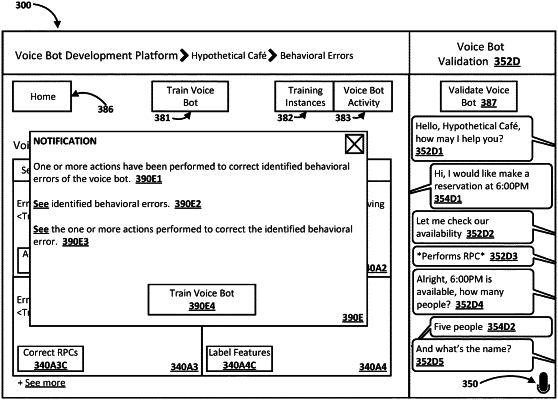| CPC H04L 51/02 (2013.01) [G06N 20/00 (2019.01); G10L 15/063 (2013.01); G10L 15/10 (2013.01); G10L 15/22 (2013.01)] | 18 Claims |

|
1. A method implemented by one or more processors, the method comprising:
identifying, via a bot development system, a trained voice bot that is associated with a third-party and a corpus of training instances utilized to train the trained voice bot;
obtaining, via the voice bot development system, voice bot activity for the trained voice bot, wherein the voice bot activity includes a plurality of previously conducted conversations between the trained voice bot, on behalf of the third-party, and a corresponding human, and wherein each of the previously conducted conversations include at least a corresponding conversation and a corresponding prior context for one or more portions of the corresponding conversation;
identifying, via the voice bot development system, and based on processing the plurality of previously conducted conversations, a given behavioral error of the trained voice bot, wherein identifying the given behavioral error of the trained voice bot comprises:
processing, using a plurality of machine learning (ML) layers of a ML model, one or more of the portions of a given corresponding conversation, of the plurality of previously conducted conversations, and a given corresponding prior context of the given corresponding conversation for one or more of the portions of the given corresponding conversation to identify the given behavioral error; and
processing, using the plurality of ML layers of the ML model or an additional plurality of ML layers of the ML model or an additional ML model, the given behavioral error to classify the given behavioral error into one or more disparate categories of behavioral errors;
determining, via the voice bot development system, and based on the given behavioral error of the trained voice bot, an action that is directed to correcting the given behavioral error of the trained voice bot; and
causing a notification to be presented to a third-party developer, via a user interface of the bot development system, based on the action that is directed to correcting the given behavioral error of the trained voice bot, wherein the third-party developer is associated with the trained voice bot.
|